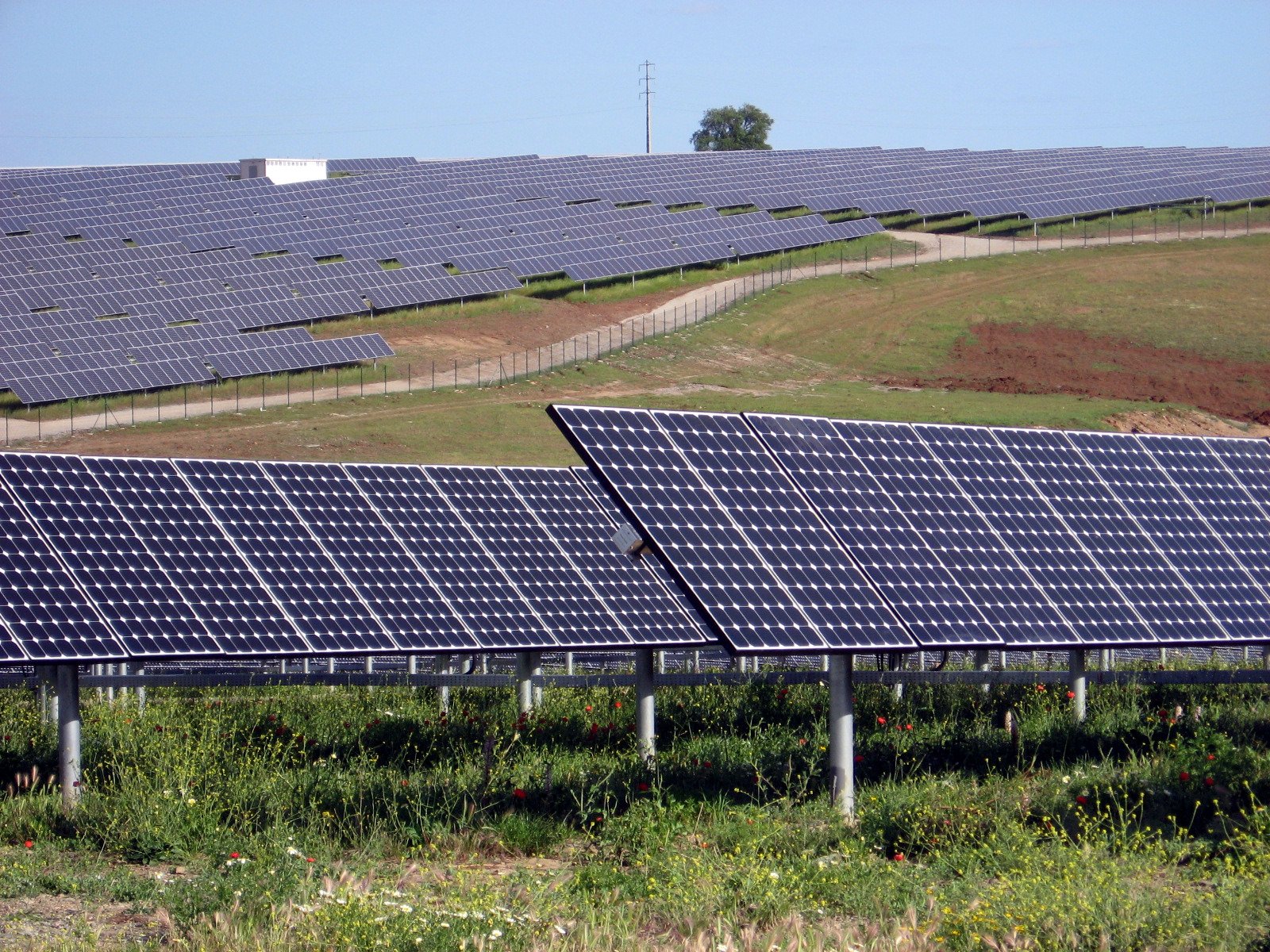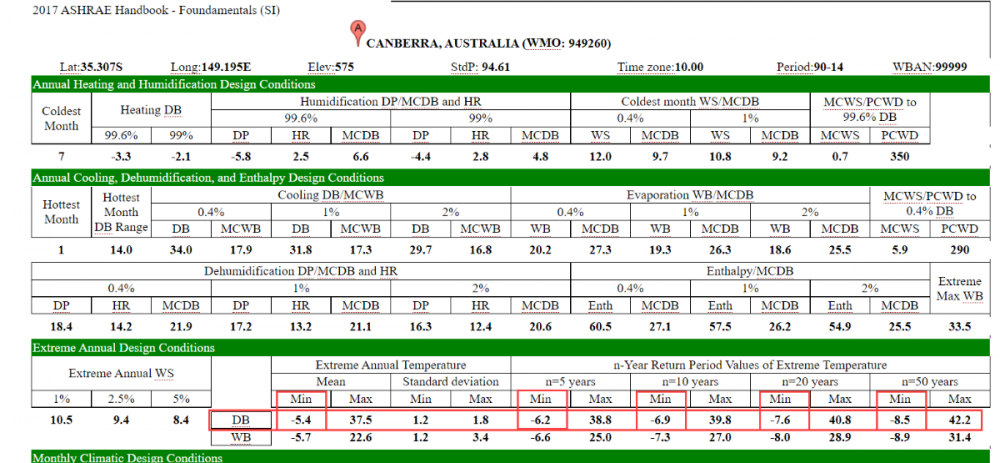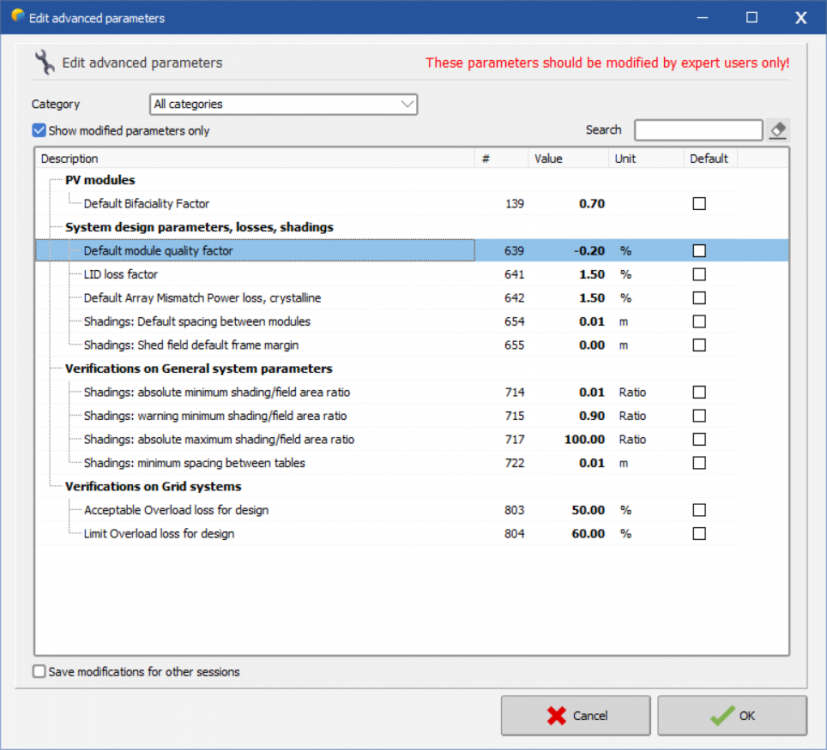-
Posts
888 -
Joined
-
Last visited
Everything posted by dtarin
-
Is this calculated as a weighted average?
-
You might be able to accomplish this using batch runs. You cannot do this on an hourly basis, but on a yearly basis and then assemble the results as you wish.
-

Project Settings > lowest temperature for "warm" countries
dtarin replied to julmou's topic in Simulations
One year of data is not sufficient to establish what an outlier condition is (what if it is warm that year?), nor would TMY data be sufficient. A TMY (synthetic or based on time-series) contains "typical" values, and not what you are looking for when designing a system to protect against damage in the rare situation where you have both low temperatures and sufficient irradiance. Ideally you want a few decades of temperature data. I've provided one resource which gives you several different timespans containing the low temperatures. I am not sure if NREL or NOAA has data for AUS, but there might be some public source for weather data similar to what we have in the US. -
Create an inverter with dummy MPPTs and allocate strings accordingly for each module type to one shared inverter. It looks like there you have two inverters which have two types of modules connected to it, but hard to read the small print in the screenshot.
-

Project Settings > lowest temperature for "warm" countries
dtarin replied to julmou's topic in Simulations
Here is one reference. Select from here temperatures under the "extreme annual design conditions". From there, it is up to the designer to select. They generally go from least to most conservative starting with the mean on down towards n=50 years. I personally wouldn't select the mean or n=50, however. I usually go with the 10 or 20 year minimum depending on other factors. http://ashrae-meteo.info/v2.0/ -
I was able to edit, click the three dots, edit button is there, works fine. ::Edit::
-

Unlimited sheds in PVsyst for PV power plant
dtarin replied to Mohamed's topic in Shadings and tracking
If you are using unlimited sheds, the exact number of rows does not really matter. Enter 100 for large utility scale plants. -
When re-running a project (initially created in 7.2.6) in 7.2.14 using the fast simulation method, the near shading losses are 0.34% lower (tracker site in Maryland, USA). Can PVsyst provide any information on where the change might have occurred with some context? I have found the following in the release notes. 0.34% for a utility scale project is not a small number. Without being able to parallel install subversions, it is difficult for users to properly track changes to production due to changes in the software, and continues to be a problem. As such, I cannot run detailed comparisons with full variable export in 8760 without having to now uninstall and downgrade to 7.2.6, then reinstall back to 7.2.14. 7.2.10 - Shadings: a small diffuse shadings correction was added for negative tilts. 7.2.12 - Simulation of trackers: irradiance optimization is now taken into account in the calculation of diffuse shading
-
Want to push this request up. When exporting projects for customers or other parties, it is quite cumbersome to have to go and delete various weather files, components, variants, etc. every time.
-
Are rear IAM losses included when computing the bifacial PR?
-
The purpose would be to allow the inverter to be limited below nameplate power (which is not uncommon), and also allow a grid limitation to be applied at the POI. This is easily implemented in excel, and should also be able to be implemented in PVsyst.
-
When testing, the measurement device(s) is likely to not be directly behind structural elements. If PVsyst can calculate the shading and IAM loss separately, could we not take GlobBak before shading and IAM losses, and use the measured irradiance to replace/correspond to this value? GlobBak = global irradiance on rear after shading and IAM GlobIncBak = global irradiance on rear before shading and IAM In this way for testing, we have a variable that corresponds to something somewhat represented by the measurement apparatus. And in terms of importing that data, PVsyst could then use this new variable to be replaced with measured data.
-
The thin objects in your scene will have the box checked labeling them as a thin object, and the trees will not. The software will calculate shading from cables as a thin object, and trees with the according to strings setting. As for what % to use, different folks will provide different answers. It is dependent on the technology, the nature of the tree shading, how modules are installed relative to the shading, etc. Typically it will be between 70% and 100% for according to strings. Most of the time I am modeling with 100% so as not to underestimate shading losses.
-
Any graphics driver updates recently?
-
Yes When you open the PVsyst report, and export the loss diagram (export > Loss diagram values), it states "Global effective energy"
-
You can modify in advanced parameters. There might be conflict in PVsyst between the setting shown in project settings and the setting in advanced parameters, they are referenced in opposite ways (shading/field vs field/shade). I have always modified in advanced settings with no issues.
-
Some of these loss assumptions can be defined in advanced parameters from the main menu. When they are updated here, you can check the default box under Detailed losses to set them. Note that module quality factor (when using the default button) will take into account the tolerance assumption set in PVsyst and what is declared in the PAN file. Default wiring resistance = DC loss LID mismatch module quality loss
-
Correct me if I am wrong, but you can manually calculate the correct PR by including the rear-side irradiance. For a vertical system, this is necessary since the rear-irradiance contribution is significant, and you will likely have irradiance instrumentation on both sides of the module in a constructed facility.
-
IAM data is the easiest to identify. Low light data (if included) and resistances would be other items, but it is less obvious as to what is correct or not. They will have an impact on production if not properly accounted for.
-
GlobEff is front side irradiance only after loss considerations (IAM, shading, soiling, etc). To get total irradiance as requested, you need to add the rear side irradiance gain * bifaciality to GlobEff. If you export your waterfall to excel, it will include additional information not shown in the report. It will show you GlobEff and it will also show you GlobEff + backside irradiance, labeled Global effective energy. @PVsyst admin, it would be helpful to rename one of these terms, as the same name is being applied to two different variables.
-
Understood, however, it is more time consuming to go through each item one at a time on sites with challenging topography and several items. If there is a revamp, displaying all at once and highlighting the modules would be helpful.
-
Thank you for the reply. The concern is not with development, but the inability to run two subversions at the same time. It is not possible to properly investigate new versions for differences in production or report issues to support while still being able to carry out work responsibilities should we encounter any errors in the updated version. As it stands, I need a second license on a second machine to run two in parallel.





